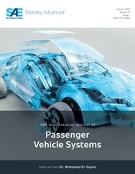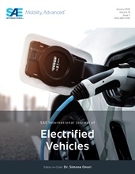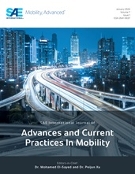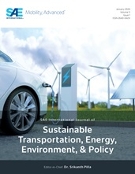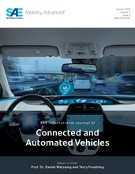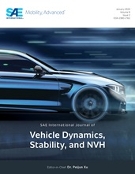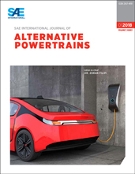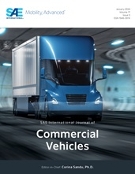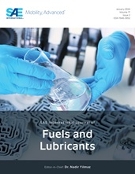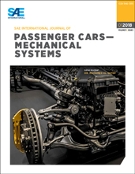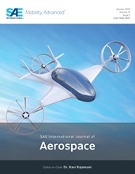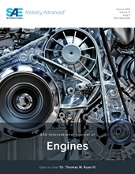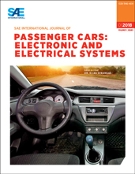Your Destination for Mobility Engineering Resources
Announcements for SAE Mobilus
Browse AllRecent SAE Edge™ Research Reports
Browse All 156Recent Books
Browse All 970Recently Published
Browse AllThis SAE Standard describes alternator physical, performance, and application requirements for heavy-duty electrical charging systems for off-road work machines, including those defined in SAE J1116
This SAE Recommended Practice describes the test procedures for conducting free-motion headform testing of heavy truck cab interior surfaces and components. A description of the test setup, instrumentation, impact configuration, target locations, and data reduction is included
In recent years, battery electric vehicles (BEVs) have experienced significant sales growth, marked by advancements in features and market delivery. This evolution intersects with innovative software-defined vehicles, which have transformed automotive supply chains, introducing new BEV brands from both emerging and mature markets. The critical role of software in software-defined battery electric vehicles (SD-BEVs) is pivotal for enhancing user experience and ensuring adherence to rigorous safety, performance, and quality standards. Effective governance and management are crucial, as failures can mar corporate reputations and jeopardize safety-critical systems like advanced driver assistance systems. Product Governance and Management for Software-defined Battery Electric Vehicles addresses the complexities of SD-BEV product governance and management to facilitate safer vehicle deployments. By exploring these challenges, it aims to enhance internal processes and foster cross
This specification covers a corrosion- and heat-resistant steel in the form of bars, wire, forgings, mechanical tubing, flash-welded rings, and stock for forging or flash-welded rings
With increasing pursuit for comfort in mobility NVH characteristics are becoming more important than ever. Achieving a benchmark beating NVH behavior involves optimizing source, transfer paths as well as target location mechanical characteristics. In ICE vehicles, powertrain accounts for major source of noise and vibration. This work encompasses NVH refinement strategies for a single cylinder compression ignition engine. The work starts with setting target values for NVH characteristics based on competitive benchmark data analysis. A complete development strategy involving extensive testing and CAE correlation is presented here. Contribution analysis in component level for optimization of NVH behavior is carried out employing NVH testing in anechoic chamber supported by CAE simulations. This paper describes the later phases of the entire development process which are decisive for engine NVH; the combustion and mechanical development phase and the NVH development and refinement phase
The integration of Artificial Intelligence (AI) and Machine Learning (ML) technologies has significantly changed various industries. This study demonstrates the application of a Convolutional Neural Network (CNN) model in Computational Fluid Dynamics (CFD) to predict the drag coefficient of a complete vehicle profile. We have developed a design advisor that uses a custom 3D CNN with a U-net architecture in the DEP MeshWorks environment to predict drag coefficients (Cd) based on car shapes. This model understands the relationship between car shapes and air drag coefficients calculated using computational fluid dynamics (CFD). The AI/ML-based design advisor feature has the potential to significantly decrease the time required for predicting drag coefficients by conducting CFD calculations. During the initial development phase, it will serve as an efficient tool for analyzing the correlation between multiple design proposals and aerodynamic drag forces within a short time frame
With the advent of electric and hybrid drivetrain in the commercial vehicle industry, electrically driven reciprocating compressors have gained widespread prominence. This compressor provides compressed air for key vehicle systems such as brakes, suspension systems and other auxiliary applications. To be a market leader, such an E-compressor needs to meet a myriad of design requirements. This includes meeting the performance by supplying air at required pressure and flow rate, durability requirements and having a compact design while maintaining cost competitiveness. The reed valve in such a compressor is a vital component, whose design is critical to meet the aforementioned requirements. The reed valves design has several key parameters such as the stiffness, natural frequency, equivalent mass, and lift distance which must be optimized. This reed valve also needs to open and close rapidly in response to the compressor operating speed. Since it is the order of milliseconds, the valve
In today’s world, Vehicles are no longer mechanically dominated, with increased complexity, features and autonomous driving capabilities, vehicles are getting connected to internal and external environment e.g., V2I(Vehicle-to-Infrastructure), V2V(Vehicle-to-Vehicle), V2C(Vehicle-to-Cloud) and V2X(Vehicle-to-Everything). This has pushed classical automotive system in background and vehicle components are now increasingly dominated by software’s. Now more focus is made on to increase self-decision-making capabilities of automobile and providing more advance, safe and secure solutions e.g., Autonomous driving, E-mobility, and software driven vehicles, due to which vehicle digitization and lots of sensors inside and outside the vehicle are being used, and automobile are becoming intelligent. i.e., intelligent vehicles with advance safe and secure features but all these advancements come with significant threat of cybersecurity risk. Therefore, providing an automobile that is safe and
